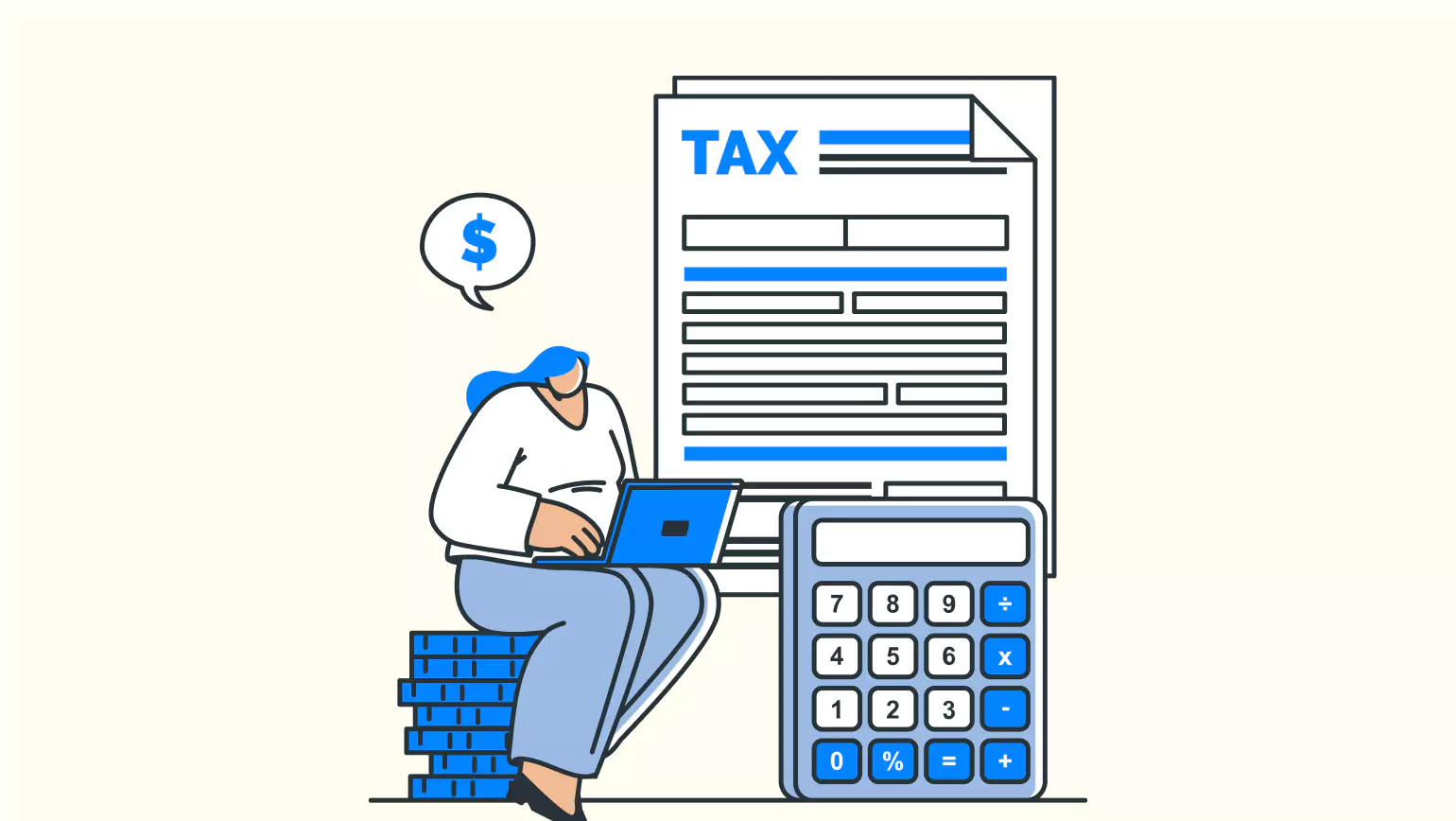Payroll taxes in the Philippines can be tricky, especially for business owners. Missing a BIR deadline or misunderstanding filing requirements can lead to hefty penalties—an experience no one wants to go through.
The good news? Staying on top of payroll taxes doesn’t have to be stressful. With the right knowledge and tools, it’s possible to ensure compliance and avoid unnecessary costs.
This article will walk through practical tips and strategies to simplify payroll taxes and keep your business on the right track. Let’s get started!
So, let's get started.
What is Payroll Tax in Philippines?
Payroll tax in the Philippines is more than just a paycheck deduction. It secures funding for important programs such as health insurance and social security. Employers are expected to handle the tax-situation here, which includes calculating and remitting these contributions. These are crucial for creating a safety net employees can rely on along with fueling national progress.
For example, when an employee earning ₱20,000 a month receives their paycheck, deductions are made for contributions to the Social Security System (SSS), PhilHealth, and the Home Development Mutual Fund (Pag-IBIG).
The employer matches some of these contributions and remits the total amount to the respective agencies. These contributions ensure the employee has access to healthcare, social security benefits, and housing loan opportunities in the future.
Key Components of Payroll Taxes
If you think payroll taxes are limited to income tax, you are wrong. Here are the various components you need to keep in check:
Income tax deductions
This is the tax levied on the income earned by employees. It’s a progressive tax, meaning the rate increases as income goes up. As of 2024, the Philippines' income tax rates under the Tax Reform for Acceleration and Inclusion (TRAIN) Law are structured as follows:
Up to PHP 250,000: 0% (exempt from tax)
Over PHP 250,000 up to PHP 400,000: 15% of the excess over PHP 250,000
Over PHP 400,000 up to PHP 800,000: PHP 22,500 + 20% of the excess over PHP 400,000
Over PHP 800,000 up to PHP 2 million: PHP 102,500 + 25% of the excess over PHP 800,000
Over PHP 2 million up to PHP 8 million: PHP 402,500 + 30% of the excess over PHP 2 million
Over PHP 8 million: 35%
So, let's say an employee earns PHP 50,000 per month, their annual income would be PHP 600,000.
According to the tax brackets:
Income over PHP 250,000 up to PHP 400,000 is taxed at 15% of the excess over PHP 250,000
For an income of PHP 50,000 per month, this falls into the PHP 400,000 range (annual income of PHP 600,000)
Here's how the tax calculation works:
For the first PHP 250,000, no tax is applied.
For the next PHP 150,000 (from PHP 250,000 to PHP 400,000), the tax is 15%:
150,000 × 15% = PHP 22,500
For the remaining income from PHP 400,000 to PHP 600,000, which is PHP 200,000, the tax is 20%:
200,000 × 20% = PHP 40,000
Thus, the employee would pay a total of PHP 62,500 in federal income tax annually, or about PHP 5,208 monthly.
Social security system (SSS) contributions
SSS is a government-mandated program that provides social security benefits to employees, including retirement, disability, and health benefits. Both the employer and employee contribute to SSS for social security and medicare.
Example: For an employee earning PHP 40,000 a month, the total SSS contribution might be PHP 2,500, split between the employee and the employer
Also, keep an eye on SSS contribution limits and rates, as they are updated annually. Make sure to check the latest SSS contribution table to ensure proper deductions. Here's a glimpse of what you can expect:

PhilHealth contributions
PhilHealth is the country’s health insurance program, which covers hospital and medical expenses. Like SSS, both the employer and the employee contribute. In 2019, the PhilHealth contribution rates for different years were determined. As of 2024, the rate is 5% which will continue in 2025 as well.

Here's an example to explain the PhilHealth contribution rates:
If a person earns ₱8,000, their PhilHealth contribution is ₱500 (5% of ₱8,000).
If a person earns ₱50,000, their contribution would be ₱2,500 (5% of ₱50,000).
If a person earns ₱120,000, their contribution is capped at ₱5,000 (5% of ₱120,000, but the maximum contribution is ₱5,000).
So remember that PhilHealth contributions are based on salary brackets. Ensure that your payroll system is using the correct contribution table based on the employee’s income level.
Pag-IBIG contributions
Pag-IBIG Fund is a government-run savings program that provides housing loans, savings, and other financial assistance. Both employees and employers make contributions to the fund.
Starting in 2024, Pag-IBIG contribution rates have doubled, making the program even more beneficial for Filipino workers. If you earn ₱1,500 or less a month, you'll contribute 1% of your total salary. For those earning more than ₱1,500, your personal share will increase to 2% of your income.

While Pag-IBIG contributions are generally lower, be sure to stay updated on contribution changes. It’s also worth checking if the employee wants to make voluntary contributions over the mandatory amount for additional savings.
Other deductions
In addition to the mandatory contributions, there may be other deductions that affect an employee’s take-home pay. These include:
Loan repayments: Any loans the employee has with the company, like salary advances or employee loans
Health insurance: If the company provides additional employee benefits beyond PhilHealth, these can be deducted from the salary
Retirement fund contributions: If the company offers a retirement savings plan
Employer contributions
Employers are also responsible for paying certain taxes and contributions on behalf of their employees. These include:
Employer’s share of SSS
Employer’s share of PhilHealth
Employer’s share of Pag-IBIG
When calculating payroll taxes, you need to keep track of:
Income tax: Progressive tax rates based on the employee's income
SSS: Employee and employer contributions to social security
PhilHealth: Contributions for health insurance
Pag-IBIG: Contributions to the housing fund
Other deductions: Loans, insurance, or additional retirement plans
Employer contributions: Your share of SSS, PhilHealth, and Pag-IBIG
How to Compute Payroll's Taxable Income in the Philippines
Here are some easy steps to save time while calculating payroll taxes:
Step-1: Start with the basics- gross income
Gross income refers to everything an employee earns before any deductions. This includes salary, allowances, bonuses, and other forms of compensation.
Example: Let’s say Maria has the following earnings in a month:
Basic salary: PHP 40,000
Transportation allowance: PHP 5,000
Meal allowance: PHP 3,000
13th month pay: PHP 10,000
So, Maria's gross income is:
PHP 40,000 + PHP 5,000 + PHP 3,000 + PHP 10,000 = PHP 58,000
Quick Check: Ensure all bonuses and allowances are included in gross income, except for tax-exempt items like 13th-month pay. Missing out on any component can lead to underreporting and potential penalties.
Step-2: Subtract non-taxable income
Next, you need to subtract any income that is exempt from taxes. The Philippines has some tax-exempt items, such as:
13th Month Pay (up to PHP 90,000)
Cash gifts and allowances that are below the taxable threshold
Contributions to SSS, PhilHealth, and Pag-IBIG (which we’ll handle later)
In Maria’s case, her 13th-month pay of PHP 10,000 is tax-exempt (since it's below PHP 90,000), so we don’t need to include it in the taxable income.
Now, Maria’s taxable gross income would be:
PHP 58,000 (Gross Income) - PHP 10,000 (13th Month Pay) = PHP 48,000
Quick Check: Always verify if bonuses and allowances are within the tax-exempt threshold. If the amount exceeds PHP 90,000, the excess becomes taxable, so it’s crucial to apply the exemption correctly.
Step-3: Deduct mandatory contributions
This includes contributions to government-mandated programs like SSS, PhilHealth, and Pag-IBIG. These contributions are mandatory, and both the employee and employer share the cost. For simplicity, let's assume:
SSS: PHP 2,500
PhilHealth: PHP 600
Pag-IBIG: PHP 200
Example: Let’s subtract these deductions from Maria’s gross income:
PHP 48,000 (Taxable Gross Income) - PHP 2,500 (SSS) - PHP 600 (PhilHealth) - PHP 200 (Pag-IBIG) = PHP 44,700
Quick Check: Double-check SSS, PhilHealth, and Pag-IBIG rates against the official tables to avoid mismatches during audits. Incorrect contributions can lead to non-compliance issues.
Step 4: Account for optional deductions (if applicable)
There are other deductions that may be made, such as loans, insurance premiums, or other benefits. Let’s say Maria also has a loan deduction of PHP 1,500.
Now, her taxable income would look like:
PHP 44,700 (After Mandatory Deductions) - PHP 1,500 (Loan) = PHP 43,200
Quick Check: Ensure optional deductions, like loan repayments, are properly documented and authorized by the employee. Unapproved deductions could result in disputes.
Step 5: Apply the tax rate
The final step is applying the income tax rate based on Maria's taxable income. The Philippines uses a progressive tax system, which means the more you earn, the higher your tax rate.
Let’s say that for a taxable income of PHP 43,200, Maria falls under the tax rate of 20% for income between PHP 30,000 and PHP 70,000.
Example: Maria’s tax would be calculated as:
PHP 43,200 × 20% = PHP 8,640
So, after all the deductions, Maria’s tax due is PHP 8,640.
Quick Check: Confirm if the employee qualifies for any special tax exemptions (e.g., senior citizens, PWDs, or OFWs). These exemptions can significantly reduce the tax liability.
Challenges in Complying with Payroll Taxes in the Philippines
Here are some hurdles you might face while tackling payroll taxes:
Complex tax regulations
Philippine tax regulations involve multiple layers—income tax, SSS, PhilHealth, and Pag-IBIG—each with unique rules, rates, and deadlines. Missing even a minor update can result in errors or penalties.
To tackle this, you can:
Subscribe to official updates: Regularly monitor updates from the Bureau of Internal Revenue (BIR) and government agencies. Subscribing to their newsletters or alerts can keep you informed about changes
Leverage payroll software: Platforms like Darwinbox automatically sync with the latest tax regulations, reducing the risk of compliance gaps
The math struggle
Accurate calculations are crucial, but managing tax brackets, contribution caps, and varying percentages for each employee can feel overwhelming, especially for businesses with larger teams. To simplify this process and ensure consistency, create or download payroll computation templates that account for tax brackets and deductions.
Tech tangles
Small businesses relying on manual processes often encounter bottlenecks in payroll compliance. Without automation, a single missed entry can escalate into bigger issues, from incorrect filings to compliance penalties.
Here’s what you should do instead:
Use digital solutions: Transition to simple software or in-house tools that centralize payroll data, helping you manage calculations and contributions more efficiently
Improve team training: Equip your HR and finance teams with knowledge on best practices for payroll compliance, ensuring consistency across processes
Surprise inspections
Government audits and inspections can add significant pressure. Employers need clear, accurate, and easily accessible records to address any questions from auditors.
To ensure you are prepared:
Maintain organized records: Keep digital backups of payroll documents, including payslips, tax filings, and contribution receipts, to ensure compliance during audits
Conduct mock audits: Periodically review your payroll processes internally to identify and address potential gaps before external inspections
While there are plenty of challenges to deal with, the right tools and knowledge about the latest updates can make the process manageable.
Payroll Taxes vs. Income Taxes
If you have often wondered how these two taxes are different, let's get things clear once and for all:
| Aspect | Payroll Taxes 🎩 | Income Taxes 💼 |
|---|---|---|
| Who Pays? | Employers and employees split the burden | Only employees (or individuals) handle the payment |
| What's It For? | Funds social benefits like SSS, PhilHealth, and Pag-IBIG | Keeps the government running and supports public services |
| Calculation Style | A fixed percentage—simple and predictable | Graduated rates—starts small and climbs as your income rises |
| When Is It Deducted? | Automatically deducted from your paycheck before you even see it 💸 | Calculated annually, but often paid through monthly withholding |
| Feel-Good Factor | You’re contributing to safety nets you might use one day 🤝 | Let’s be honest... it’s more of a civic duty🏛️ |
| Impact on Take-Home Pay | Chisels away a small piece of your paycheck | Can sometimes feel like it’s grabbing a bigger chunk |
| Fun Fact | Everyone plays: even lower-income earners pitch in! | The big earners feel this one the most |
Pro Tip: While payroll taxes are automatically deducted from your employees’ salaries, always double-check the latest tax rates and exemptions, especially for income tax. Keeping up-to-date with the changes can save you from overpaying or underpaying and preventing unwanted fines.
Cut Through the Hassle of Payroll Taxes
Payroll taxes in the Philippines can be complex, but they’re manageable with the right approach. From constantly shifting tax rates to calculating the right deductions for each employee, the risk of errors is high. And the stakes? Huge.
A single mistake can lead to costly fines, legal headaches, and strained relationships with employees. Staying on top of tax deadlines can feel like a full-time job, leaving your team overwhelmed and distracted.
That’s where Darwinbox steps in. It takes the burden off your shoulders by automating tax calculations, deductions, and remittances, ensuring everything is accurate and timely. No more scrambling to meet deadlines or worry about compliance slip-ups.
Want to focus more on growing your business instead of fighting with numbers? Schedule a demo today!
FAQs
What is payroll tax in Philippines?
Payroll tax is a mandatory tax deducted from employees’ salaries and paid to the Bureau of Internal Revenue (BIR). Employers handle the nitty-gritty—calculating, withholding, and remitting the tax—so employees don’t have to worry about it.
Does Everyone Pay a Payroll Tax?
No, Payroll tax applies to individuals earning above the taxable income threshold set by the government. If you’re earning below that threshold, you’re off the hook for payroll tax, but you may still contribute to other deductions like SSS, PhilHealth, and Pag-IBIG.
How much tax is deducted from salary in the Philippines?
The deduction varies based on your income. The Philippines uses a graduated tax system, so the higher your salary, the higher the percentage you pay. The range starts at 0% for low earners and goes up to 35% for those earning over PHP 8 million annually. Other mandatory contributions can also add to your total deductions.
How much is salary tax in the Philippines?
It depends on your salary bracket. For example, if your monthly salary falls between PHP 20,833 and PHP 33,333, you’re looking at a tax rate of 20% on the amount exceeding PHP 20,833, plus a fixed base amount. The BIR has detailed tax tables to make these calculations easier.
Is 30k salary taxable in the Philippines?
Yes, it is! A PHP 30k monthly salary falls within the taxable range. You’ll pay a percentage of your income as tax based on the BIR’s graduated tax table, plus any applicable contributions to SSS, PhilHealth, and Pag-IBIG.





